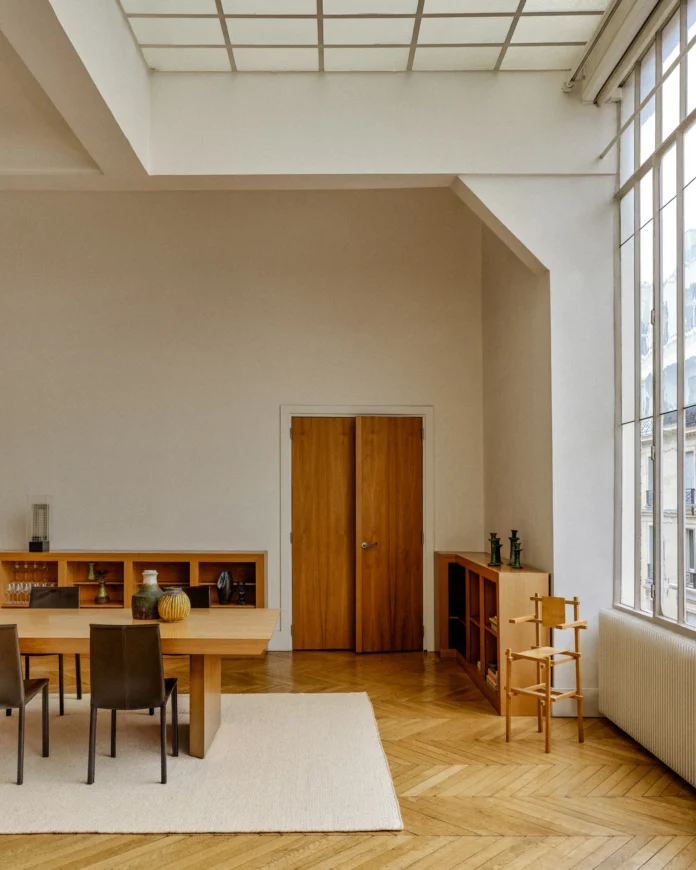Once dismissed as dated or rustic, pine is making an unexpected—and decidedly chic—return to interior design. No longer confined to log cabins or 90s country kitchens, this humble wood is being reimagined in contemporary spaces, offering warmth, texture, and a touch of nostalgia. If you’re ready to embrace pine’s revival, here’s how to incorporate it tastefully into your home.
Why Pine Is Back
Pine’s resurgence reflects a broader shift toward natural materials and organic textures in design. As minimalism softens into a more lived-in, “quiet luxury” aesthetic, pine’s knots, grain variations, and honeyed tones feel refreshingly authentic. Unlike the sterile perfection of high-gloss finishes, pine tells a story—each scratch and imperfection adding character.
“It’s about embracing the beauty of the unpretentious,” says interior designer Mara Miller. “Pine brings an approachable warmth that more expensive woods sometimes lack.”
Modern Takes on a Classic Material
Gone are the days of orange-toned pine dominating entire rooms. Today’s designers are using it strategically to add contrast and depth. Here’s how to make it work:
1. Mix It With Sleeker Materials
The key to keeping pine from feeling kitschy? Pair it with modern elements like black steel, marble, or polished concrete. A pine dining table, for instance, looks effortlessly cool when surrounded by minimalist metal chairs. Similarly, pine open shelving in a glossy white kitchen adds just the right amount of rustic charm.
2. Go for a Lighter Finish
The pine of yesteryear often suffered from dark stains that amplified its yellow undertones. Instead, opt for natural, lime-washed, or white-oiled finishes that let the wood’s raw beauty shine. “A bleached or cerused treatment keeps pine feeling fresh,” says Miller.
3. Use It as an Accent
If committing to a full pine wall feels too bold, start small. Floating pine shelves, a reclaimed mantel, or even a statement ceiling beam can introduce the material without overwhelming a space.
4. Lean Into Scandinavian or Japandi Styles
Pine’s natural simplicity makes it a perfect fit for Scandinavian and Japandi interiors, where light woods and clean lines reign. Think: pine sideboards, slatted room dividers, or minimalist platform beds.
5. Reclaimed Is Your Friend
Weathered, reclaimed pine has an instant patina that new wood can’t replicate. Use it for feature walls, flooring, or even kitchen islands to add instant history to a space.
Rooms That Nail the Pine Revival
- Kitchens: Instead of all-pine cabinetry (which can feel heavy), try pairing pine open shelving with matte black hardware or a marble countertop.
- Bedrooms: A pine bed frame brings warmth, especially when layered with crisp white linens and textured throws.
- Living Rooms: A reclaimed pine coffee table or media console adds organic contrast to a sleek, modern sofa.
- Bathrooms: Pine vanities with a matte sealant (to protect against moisture) create a spa-like, earthy vibe.
What to Avoid
While pine is versatile, there are a few pitfalls:
- Overdoing the “Cottagecore” vibe—too much unchecked rustic charm can veer into theme territory.
- Ignoring upkeep—pine is softer than oak or walnut, so high-traffic areas may need extra protection.
- Matching everything—a room full of pine furniture can feel monotonous; break it up with other materials.
The Takeaway
Pine’s revival proves that good design isn’t about chasing trends—it’s about reinterpreting the familiar in new ways. Whether through a single statement piece or subtle accents, this once-overlooked wood can bring warmth, texture, and a sense of authenticity to any space. The best part? Unlike high-end hardwoods, pine is affordable, sustainable, and full of character—making it a smart choice for stylish, livable interiors.
Ready to give pine a try? Start small, mix thoughtfully, and let its natural charm shine.










